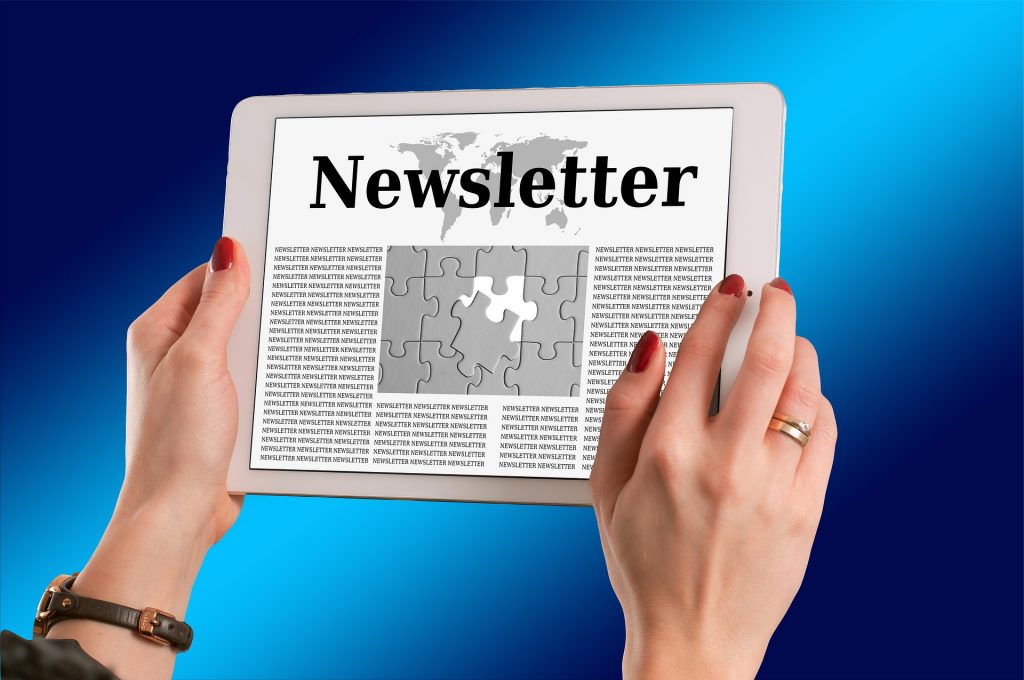
8 ways to build your email list like a pro
Email marketing is a great way to stay in touch with your customers, share exciting news or offers, and drive conversions and revenue.
But for email marketing to work, you have to have a good subscriber list.
Fortunately, there are some fantastic opportunities to grow your subscriber list and many of them are free or affordable to implement.
If you’re feeling your email list growth has gone stagnant or you want to focus on growing your list for your 2020 marketing efforts, here are some ideas on how to grow your email list.
How to build your email marketing list in 8 steps

1. It starts with content
Yes, one of the best ways to build your email list is to take a step backwards and evaluate your content. No one will subscribe if the content isn’t good. Seems simple, right?
But how do you know if your content is good? Take a look at your engagement metrics like click-through rate (CTR), social shares and forwards, unique opens, and even looking at heat maps to see where in the email people are spending their time.
You can also look at your website and social media analytics to see what content pieces are the most popular and replicate that content within your email campaigns.
Use your buyer personas as well to make sure your messages are targeted to the right audience and presented in the right format, like blog posts, infographics, videos, or podcasts.
2. Run a promotion or contest
While you should still offer great content in each email, sometimes an incentive can give your list quite the boost or that little bit of encouragement a subscriber needs to give you their email address.
I sign up for emails when the salesperson tells me they send out discount codes and exclusive offers as that’s what I’m interested in. It just happens to be a bonus if they send out other cool and engaging emails with their promotional offers.
Another easy way is to run a contest. If I have the chance to win a gift card, a trip, or anything really, I’ll give out my email address – and then it’s up to the brand to prove they get to keep me as a subscriber with quality content.
I think there are three strong contest styles:
- Caption this: You share a photo and they have to write a good caption and get the most votes on their comment to win.
- User-generated content: Participants share their own content and get votes.
- Sweepstakes: Participants enter their name and email address on a form to join.
With contests, whether through email or social, they have to have a low barrier to enter or you’ll turn people off from your contest. The bigger the prize, the more you can ask of your participants. But if you’re just giving out a $50 gift card and ask for them to give you their email address, fill out a form, like a post on social, and follow them – bye! You’ve lost a potential subscriber.
Sweepstakes are the easiest ones to run, but I think making it more fun and engaging goes a long way in starting to build that relationship and even provides you with User-Generated Content (UGC) you can use in future marketing campaigns.
3. Email shares
Encourage subscribers to share emails with friends or family, either by forwarding or posting to social to help others find your content and then subscribe.
A fun way to get email shares is to do a pay it forward campaign. Subscribers are assigned a specific discount code that they share and if the code is used a certain number of times, they get sent a discount for themselves as a thank you for sharing.
4. Events or series
Host an event, like a webinar or training workshop, and allow them to opt in to your email marketing campaigns when they sign up for the event, or encourage them to subscribe at the conclusion of your event. This is a great opportunity to reach out to media partners so you can sponsor an event but not be completely responsible for its execution.
Another option, that really utilizes segmentation, is to create unique email series. Maybe you’re in marketing for a gym or fitness center. You could have a series for both men and women’s fitness, family fitness with healthy living tips for kids, a recipe series, and so on.
This makes each email targeted and engaging, which makes it easier for people to subscribe as they’re more likely to find the content useful and relevant.
5. Landing pages and lead magnets
How often have you given over your email address to download an ebook, cheat sheet, template, or white paper? Lead magnets, quality pieces of content, draw in website visitors and require contact information before getting access to the content.
Lead magnets have to be worth it to share an email address but the landing page also has to pull its weight in getting that form filled out. The landing page can make or break the conversion.
Make sure it gets the visitor to give you their email address by having a landing page that:
- Is well designed and not too busy
- Has a single, easy-to-see CTA button
- Gets to the point in sharing the benefits of the lead magnet
- Has social proof
Include an option to subscribe to email newsletters or other campaigns.
6. Website forms and popups
You should always have a simple sign-up form on your website, some put them in their header and some in the footer, or you could even have a dedicated space for it on your Contact Us page.
If you really want to catch the attention of website visitors, use a popup form. Now, make sure it’s easy for them to get out of the popup or it’s not super obnoxious or you’ll aggravate your visitor instead of entice them to subscribe. Treat it like a mini landing page, make it easy to fill out, tell them why they should sign up, and have one clear CTA.
7. Social media
Share campaigns on social so followers can see what your emails contain and then tell them how to subscribe or comment on your own post with a link to a sign-up form.
Use your about sections and links to direct people to a sign-up page, or use Facebook’s CTAs to create social media sign-up forms so users don’t even have to leave Facebook to subscribe. You can also ask your social media following what content they’d like to see in emails to engage both audiences and make your emails seem more relevant as users direct the content.
8. Ads
Finally, you can try advertising to grow your email list. This is a great way to reach potential customers and those unfamiliar with your brand and introduce yourself in a non-threatening or super salesy way.
Facebook specializes in lead ads and with their impressive targeting options and ability to create lookalike audiences, you can get quality leads and email subscribers.
Have you tried any of these methods to grow your email list? Share your tips and tricks on Twitter!




